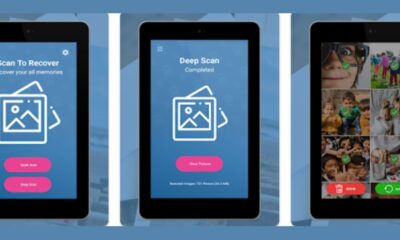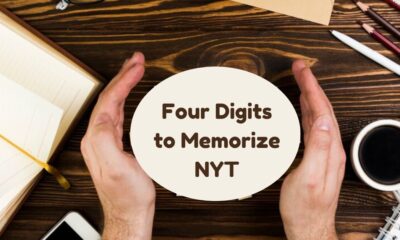Education
Four Digits to Memorize: Unlocking Access to Premium NYT Content

In the digital age, the importance of access codes and passwords cannot be overstated. These digital keys are essential for protecting personal information, securing financial transactions, and unlocking premium content across various platforms. Among the many prominent players in online journalism, The New York Times (NYT) stands out for its quality reporting and in-depth analysis. Accessing the NYT’s digital content, however, often requires a unique four digits to memorize nyt, a small yet significant barrier to the treasure trove of information it holds.
The Evolution of Digital Subscriptions
The concept of digital subscriptions has evolved significantly over the past two decades. Initially, most online content was available for free, supported by advertising revenue. However, as the demand for high-quality journalism grew and advertising revenues fluctuated, many news organizations began to explore subscription models. The New York Times was at the forefront of this transition, implementing its digital subscription model in 2011.
This move was both a response to declining print circulation and an effort to generate a sustainable revenue stream from its digital audience. The NYT’s paywall strategy was met with a mix of skepticism and optimism. Critics argued that people were accustomed to free news and might resist paying for content. However, supporters believed that the value of quality journalism would justify the cost, and indeed, the NYT has seen significant growth in its digital subscriber base over the years.
The Mechanics of NYT’s Access Codes
The use of access codes is a strategic component of the NYT’s subscription model. These codes serve multiple purposes: they simplify the login process for subscribers, provide temporary access for promotional purposes, and enhance security by ensuring that only authorized users can access premium content.
- Simplified Access: For regular subscribers, having a four digits to memorize nyt can simplify the login process. Rather than entering a full username and password each time, subscribers can quickly enter their code to access their accounts.
- Promotional Access: The NYT often uses access codes for marketing campaigns. For example, they may offer a four digits to memorize nyt to potential subscribers as a part of a free trial or promotional offer. This allows users to experience the value of the NYT’s content before committing to a subscription.
- Enhanced Security: Security is a major concern for any digital platform, and the NYT is no exception. By requiring an additional layer of authentication in the form of a four digits to memorize nyt the NYT can help protect against unauthorized access and potential breaches.
The Importance of Memorizing Access Codes
Memorizing access codes, especially for platforms as significant as the NYT, is crucial for several reasons:
- Convenience: Memorizing the code eliminates the need to retrieve it each time you need access, saving time and effort.
- Security: Keeping your code memorized and not written down reduces the risk of it being found and used by unauthorized individuals.
- Continuous Access: For professionals and enthusiasts who rely on the NYT for up-to-date information and in-depth analysis, uninterrupted access is vital. Memorizing the code ensures that you can access content anytime, anywhere, without unnecessary delays.
Tips for Memorizing Your Four digits to memorize nyt
Four digits to memorize nytcan be simple with the right techniques. Here are some strategies to help you commit your NYT access code to memory:
- Association: Associate the digits with something familiar. For instance, if your code is 1945, you might remember it as the year World War II ended.
- Repetition: Repetition is key to memorization. Repeating the code several times a day, especially in the beginning, will help reinforce it in your memory.
- Chunking: Break down the code into smaller parts. For example, if your code is 6724, think of it as 67 and 24, and then associate each chunk with something familiar.
- Visualization: Visualize the numbers in your mind. Picture them in a specific order or place them in a familiar setting to make them more memorable.
- Use Mnemonics: Create a mnemonic or a rhyme to remember the code. For example, for the code 5823, you could use the phrase “Five Big Elephants, Three Zebras.”
Challenges and Solutions
Despite the advantages, using a four digits to memorize nyt system can present some challenges:
- Forgotten Codes: Users might forget their codes, leading to frustration and access issues. The solution lies in having a secure and straightforward recovery process. The NYT provides options to reset your code via email or through customer support.
- Code Confusion: Users with multiple subscriptions or accounts might confuse their codes. To mitigate this, it’s advisable to use distinct codes for different services and utilize password managers that can securely store and recall your codes when needed.
- Security Concerns: Although a four digits to memorize nyt adds a layer of security, it’s not foolproof. The NYT enhances security by combining the code with other authentication methods, such as passwords or biometric verification, ensuring robust protection of user accounts.
The Role of Digital Access in Modern Journalism
The significance of digital access in modern journalism cannot be overstated. In today’s fast-paced world, timely and reliable information is crucial. The New York Times, with its comprehensive coverage and expert analysis, serves as a vital source of information for millions. By implementing access codes and subscription models, the NYT not only secures its content but also underscores the value of quality journalism.
- Sustainable Journalism: Digital subscriptions provide a steady revenue stream, enabling news organizations like the NYT to invest in quality journalism. This, in turn, supports investigative reporting, international coverage, and in-depth analysis that free models often cannot sustain.
- Reader Engagement: Access codes and subscription models foster a more engaged reader base. Subscribers are more likely to be regular readers, participating in discussions, providing feedback, and supporting the publication’s mission.
- Personalized Content: Digital platforms can leverage subscriber data to offer personalized content, enhancing the reader’s experience. By understanding reader preferences, the NYT can tailor its content to meet the needs and interests of its audience.
The Future of Access Codes in Digital Media
As technology continues to evolve, so will the methods of accessing digital content. While the four digits to memorize nyt is effective today, future innovations may introduce new forms of authentication. Biometrics, advanced encryption, and AI-driven security measures are just a few examples of how digital access might evolve.
- Biometric Authentication: Fingerprint and facial recognition technologies are becoming more common. These methods offer a high level of security and convenience, potentially replacing traditional access codes.
- AI and Machine Learning: AI can enhance security by detecting unusual login patterns and preventing unauthorized access. Machine learning algorithms can adapt to user behavior, offering a seamless and secure access experience.
- Blockchain Technology: Blockchain offers decentralized and highly secure authentication methods. This technology could revolutionize how we access digital content, providing an unbreachable layer of security.
Conclusion
The four digits to memorize nyt code for the New York Times represents more than just a means of entry; it symbolizes the intersection of security, convenience, and the value of quality journalism. As we navigate the digital age, the importance of such access codes will only grow, ensuring that premium content remains secure yet accessible to those who value it.
By understanding the mechanics and significance of these codes, subscribers can better appreciate the measures taken to protect their access and the integrity of the content they consume. As technology continues to advance, so too will the methods of securing and accessing digital media, promising a future where high-quality journalism remains both protected and readily available.
-

 Entertainment6 months ago
Entertainment6 months agoBaddieHub: Transforming the Landscape of Digital Empowerment
-

 Health & Fitness5 months ago
Health & Fitness5 months agoThe //vital-mag.net blog The Complete Resource for Health
-

 Review8 months ago
Review8 months agoεμφανιση σβισμενον φωτογραφιων: Restoring Deleted Photos Made Easy
-

 Review7 months ago
Review7 months agoGet in Touch with TurboGeekOrg: Maximizing Your Experience on the Ultimate Tech Platform
















